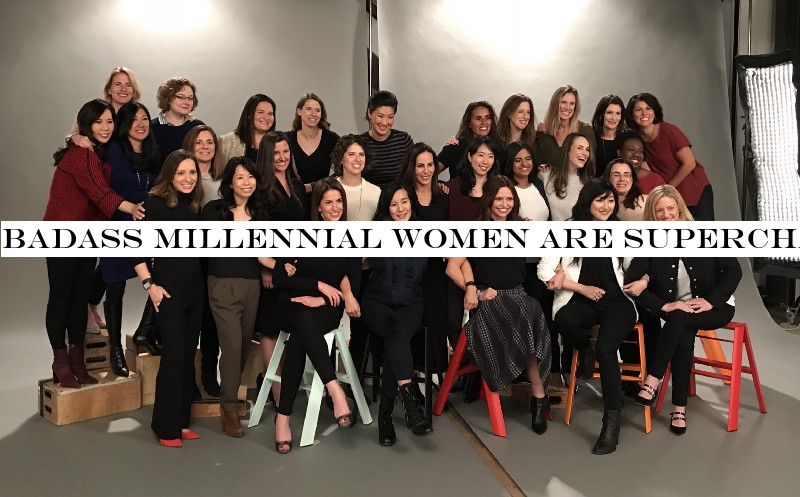Music
Trailers
DailyVideos
India
Pakistan
Afghanistan
Bangladesh
Srilanka
Nepal
Thailand
StockMarket
Business
Technology
Startup
Trending Videos
Coupons
Football
Search
Download App in Playstore
Download App
Best Collections
Technology
Whatthe lesson of WeWork?
Herea startup that has been a darling of Silicon Valley investors for years, whose offices and CEO have been stunningly painted across the covers of major trade magazines and strategically deployed across major tech conference stages, including our very own. At its peak, the company commanded a valuation of tens of billions of dollars and was supposed to be on course for the stratosphere, joining companies like Google and Facebook.
And then it all came crashing down, in literally a handful of days.
Iteasy to point to WeWorkpotentially 75%+ valuation drop, its looming layoffs, the firing of its CEO, and the seeming compression of a whole heck of a lot of investors and employee equity as a sordid disaster tale of capitalism, and venture capitalism in particular. VCs — none more so than Masayoshi Son at SoftBank — constantly overbought, oversold, and overcommitted to a company that had pretty much no business fundamentals whatsoever.
So whatthe lesson of WeWork for venture capital? In a word, nothing.
Venture capitalism is about investing in bold bets with huge, outsized returns. Itmeant to be risk-adjusted, both at the valuation scale but also at a portfolio scale. VCs should be buying equity at the right price to take into account every individual startuprisk profile while also constructing a portfolio that selects each of those risks for the best overall return.
For WeWork, much of those dollars were driven by SoftBankVision Fund, which seemed to double down again and again on the company, even at loggerheads with its own limited partners. The Vision Fund made a bet, seemingly with reasonable access to internal information, and that bet turned out to be wrong.
But a bet it was.
Many bets in venture turn out to be duds. Sometimes you lose some of your money. Sometimes you lose all of it.
And then sometimes you make it in spades. SoftBankSon once invested $20 million into a fledging Chinese ecommerce company called Alibaba. That stake is worth around $100 billion today, excluding an $11 billion stock sale a few years ago that was recognized on SoftBankfinancials earlier this year.
This is the math that Son sees in venture: 111,000,000,000 / 20,000,000 = 5,550x. There is no other asset class on the planet that will turn a dollar into thousands of dollars like venture capital.
WeWorkwoes don&t change this base formula. Nor does the continual drop of Wag, which received $300 million from the Vision Fund and looks to be going through tough challenges.
In any portfolio, there are going to be losses. The infamous J-curve in venture, where losses materialize far faster than gains in the early years of a fund, is alive and well — even at the growth stage.
And WeWork isn&t even dead yet — it still has cash, and it will rebuild. Will it be the largest startup turnaround in history? Possibly. Could it go straight to bankruptcy? Sure. Will the Vision Fund make money? Well, it really depends on that preference stack and a thousand other variables to be determined in the coming weeks, months, and years.
Itall so early. My guess is that we still have about five years to go before we really start to get sufficient information to evaluate the Vision Fundambitions.
Along this line thoughI don&t think I just need to defend venture capitalism though, but capitalism itself.
Matt Stoller, who has made it his mission to target big companies including Big Tech, summarizes the WeWork situation as emblematic of &counterfeit capitalism,& a system of founding story myths and fake growth charts underwritten by venture capitalists trying to build long-term, sustainable monopolistic companies using predatory pricing to kill off competitors.
Yet, that narrative totally misses the point of what capital does, and what investment means. Very, very few companies (venture-backed or not) are profitable from day one. Opening a restaurant requires buying equipment and signing a lease well before any customer walks in through the front door. Ditto for software startups, which need to actually build software before a user will pay for it. Capital investment is the bridge between plans to execution and launch.
The question is how long should a company be unprofitable to goad sales and drive revenues? A decade or two ago, it used to be that companies needed to be profitable to IPO. But why? Why precisely then should a company slow down its investment and clean up its cash flows? Why not earlier? Why not later?
In fact, something great has happened in the last few years in the credit markets: at least some investors are increasingly positioning their portfolios for growth rather than cash flows. They are willing to wait for profits, sometimes for years.
Or, in other words, more and more investors are thinking long-term about the ultimate potential worth of a business.
WeWork could be profitable today. It could shutter its most recently opened locations, condense down to a handful of locations in major cities, and roll around in its positive cash flow. Of course the Vision Fund understands this. But why lock in small gains today when there is so much more potential lurking out there?
We should be cheering this behavior, and not castigating it, even if WeWork itself might turn out to be a dud. The lesson of this whole saga isn&t that capitalism isn&t performing. In fact, itprecisely the opposite: (venture) capitalism is performing better than ever to invest in future, long-range growth.
- Details
- Category: Technology
Read more: WeWork proves that (venture) capitalism works
Write comment (97 Comments)Across the political, social and economic stage, womenissues are finally receiving heightened attention and priority.
There aremore women than ever seeking political office;funding for female-founded startups is reaching record levels(even if they still have a long way to go to reach gender parity);a sizable cohort of female-founded and led companies have achieved billion-dollar unicornvaluations; and several women-led companies, includingPagerDuty,The RealReal, andEventbrite, have entered the public markets with successful IPOs.
Whatdriving so much positive change?
Clearly, broadened awareness of gender and power issues, largely due to #MeToo, as well as an increase in the number of female investors, thanks to groups likeAll Raise, are all contributing catalysts. In addition, women nowoutnumber men in college,a majority of American moms are in the workforce, and in40 percent of householdsthose women are the breadwinners. But itmore than that; I believe that therea profound generational shift afloat, and that thisfirst wave of female-led unicorns is just the tip of the NASDAQ iceberg.
Unlike previous generations who may have either looked at self-investment as self-indulgence or who simply didn&t have the resources or technology available to make supplementary investments in themselves,todaybadass millennial womenare unapologetic about their desire to invest in their own success and well-being. Determined to succeed without compromising their values or physical and mental wellness, these uber-empowered millennial women are making viable a new generation of startups to help them realize their dreams and feel comfortable in their skin. I refer to this economic wave as She-conomy 2.0.
For decades now there have been tech companies, which I refer to asShe-conomy 1.0,catering to traditional and homogeneous identities of women primarily as shoppers and caregivers. In contrast, these new modern She-conomy 2.0 brands address latent, historically unmet, often un-discussed and under-served needs that speak to the multitude of other facets of our identities.
These companies have less to do with what women buy and more to do with their willingness to invest in themselves — in their careers and in their physical and emotional health and well-being. They are seeking and are willing to pay for products and services that help them advance their careers, feel comfortable about their bodies, and provide the physical and emotional support they&re seeking.

The founding members of Allraise (Image courtesy of Allraise)
Women are taking control of their careers and supporting each other.
More than two decades ago, when I had my first child, I joined a momgroup at Stanford Hospital. We were all working moms trying to juggle career and motherhood. It was a truly challenging time for each of us. The group provided such helpful support that we met every Monday evening for five years until our kids were in kindergarten. Why Mondays? Because Mondays are especially hard for working parents, marking yet another week in search of balance. We realized that meeting on Monday evenings provided us with the support we needed to make it through the work week. Perhaps even more critically, it gave us something about Mondays to look forward to.
Theresomething incredibly empowering about experiencing a major transition like a new job or new parenthood as part of a cohort. Sheryl Sandberg famously sought to institutionalize this kind of support for working women with her non-profitLean In. It has dramatically raised awareness around working womenstruggles. However, individual Lean In group leaders are usually volunteers running these sessions on the side while working and shouldering lifeendless list of other responsibilities.
Now a new generation of organizations is offering this support — for a fee. As for-profit organizations, they&re doing so in a scalable, consistent and reliable way. Women don&t have to worry about whether the organizer will be able to carve out time to orchestrate a meeting because doing so is the organizerjob.Chief,Declare,The Assembly*,The WingandThe Riveterare all examples of companies that are growing and thriving because they&re offering valuable space, support and services that women are willing to pay for. Most of these organizations initially targeted millennials, but women of all generations are benefiting and participating.

A look inside one of The RiveterSeattle co-working spaces.
Women are changing the narrative around previously taboo topics and promoting inclusiveness and acceptance of oneself.
It wasn&t long ago that mannequins, much like cover models, only came in one size. Now mainstream brands not only sell broader offerings; they increasingly showcase them in magazines, catalogs, stores and the runway. For example,Nikeflagship store in Londonfeatured bothplus-sized mannequins and para-sport mannequinsfor people with physical and intellectual abilities, and Rhiannanew inclusive lingerie line regularly presentsboth plus-size and pregnant models.
Millennials (like all of us) don&t want to feel shamed; they want to feel empowered and beautiful. Instead of settling for frumpy, ill-fitting clothing or outdated product design, millennials are using their social media megaphones to tell the market what they want.Traditional companies like VictoriaSecrethave moved at a molasses-like pace to evolve from treating women as objects of fantasy to celebrating their right to feel great about themselves. Their antiquated practices have created the opportunity for new startups to create brands centered on body positivity. Some companies are filling largely underserved market needs by catering exclusively to larger and specialty sizes, and others are addressing previously taboo topics like body hair, which also contribute strongly to feelings around body positivity.Eloquiioffers extended clothing sizes,Ruby Ribbon*andThird Loveprovide a wide sizing range of under garments and bras, andFuraddresses body hair and grooming.

Women are dedicating more attention to their own health and relationships.
Self-help bookshave been around for ages, but tech is paving the way for a new generation of services to provide guidance and support that are more convenient and targeted. At the same time, women are increasingly willing to discuss health issues that were previously taboo, like menstruation, menopause andperimenopause, fertility, and depression. Advancements in technology are making health-related self-care more accessible from the convenience of our wristbands and phones. Meanwhile, people are spending a disproportionate amount of their wealth on health, making the entire healthcare industry ripe for disruption.
All of these factors are makingfemtech big business. Countless new companies are helping women take more active control of their sexual health, including birth control and STI testing (Pill ClubandNurx), period tracking (Flo Health), fertility and egg freezing (Kind BodyandCarrot Fertility), menopause (Rory,Genneve), postpartum depression and miscarriage(Maven) and even our relationships (Relish* andBumble). In addition, no shortage of femtech companies are addressing period care, such asLola,Cora,The Flex Company,Thinx, andSustain Natural.
These companies are only viable because so many women — beginning with millennials but expanding out to the rest of us — are now willing and able to invest in themselves. United across a shared mission of female empowerment and inclusivity, She-onomy 2.0 is making it more realistic than ever to empower us to advance our careers, feel good about ourselves and stay healthy. Hats off to the badass millennial women leading this charge; we&re all better off professionally, emotionally and even physically thanks to you!
*Denotes portfolio company for Trinity Ventures
- Details
- Category: Technology
Read more: Badass millennial women are supercharging startup investments
Write comment (93 Comments)Let us connect some dots. Five years ago, Facebook acquired VR pioneers Oculus for $2 billion. This week, it snapped up neural-interface pioneers CTRL-Labs for somewhere north of $500 million, and announced that its own massively multiplayer VR shared universe Horizon will launch early next year.
Oculus became (somewhat creepily named) Facebook Reality Labs, headed by Andrew Bosworth, one of the companyfirst 15 engineers, who also headed the companytransition from desktop to mobile advertising. It doesn&t take much imagination to see that henow in charge of a much more interesting, and longer-term, transition: from the World Wide Web to whatever lies beyond.
Their big multibillion-dollar bet, the vision floating in Mark Zuckerbergcrystal ball, is clearly that this new frontier is &cyberspace,& to use William Gibsonterm, or &the Oasis,& to borrow from READY PLAYER ONE, a copy of which was once issued to every new Oculus employee. Virtual reality, in other words, and/or maybe &mixed reality,& which combines our real world with virtual artifacts.
I can see your eyes rolling already. I admit mine are twitching skywards as well. AR/VR, like nuclear fusion and Brazil, have been the future for so long that itbecome a little hard to take that future seriously. Neuromancer was published in 1984. Jaron Lanier demo&d the first real VR headset and motion capture wearable, the EyePhone and DataGlove, more than thirty years ago. No wonder the notion of a shared global VR space increasingly feels like a retro-future.
But to Zuckcredit, the path to change here is obvious and therefore plausible: use gaming as the bridge. Create the worldfirst and best massively multiplayer online VR game. (The theory being it will be more immersive, and therefore more compelling, than Magic Leapmixed reality.) Use Facebookpower, scale, and wealth to bring gamers in until therea thriving community of many million monthly users.
Then, transition to the larger vision, of VR slowly supplanting the Web itself; replace laptops with headsets, phones with overlays on smart glasses, and keyboards with neural interfaces. Not all at once, but bit by bit, as the Horizon gameworld gradually, over a period of years, becomes a platform for socializing and messaging and work as well as play. Then the Internetdenizens won&t just visit Facebookweb site, or launch its app; instead they will, literally if virtually, live in Facebookwalled garden.
Is that vision more than a little creepy? You betcha. Is it one thatlikely to come to fruition? Well, no, I wouldn&t say likely. But I&ll concede it has a chance, one sufficiently nonzero, and sufficiently potentially spectacularly lucrative, that Facebookongoing multibillion-dollar bet makes sense. Lucrative in terms of both money and implicit power. Like I said: more than a little creepy.
Of course this isn&t Facebookonly vision of the future. Itjust one of their bets. Another is to essentially pivot from social-media advertising to messaging and transactions. You have to grudgingly admire their willingness to explore abandoning their current fantastically successful business model in favor of the untried and untested. Anything to disrupt the innovatordilemma.
Will this bet pay off? Will Facebook Horizon, plus VR and neural interfaces, be the gateway to &a consensual hallucination experienced daily by billions,& to quote William Gibson? While the odds are against it, it still seems to have a better chance than anything else on our collective horizon.
- Details
- Category: Technology
Read more: Facebook’s plan for our post-web future
Write comment (98 Comments)Hey everyone. This is Week-in-Review, where I give a heavy amount of analysis and/or rambling thoughts on one story while scouring the rest of the hundreds of stories that emerged on TechCrunch this week to surface my favorites for your reading pleasure.
Last week, I talked about how streaming networks were undoing their advantages and making way for a renewed era of piracy.

Some mission statements leave an awful lot of room for collateral damage
The big story
In the startup world, moral relativism seems to be a guiding force. But in order for this system to work, you need some sort of north star for wrongdoing. That can be hard to find though, so often missteps from Uber or Facebook of some other startup are said to be drowning in nuance and plagued by numerous stakeholders.
But, thankfully, thereJuul, a company thatwebsite is devoted to its values so that its real world impact doesn&t have to be.
This week, the startupCEO stepped down and was replaced by a Big Tobacco exec, a truly fitting development for a company that has long tried to maintain a moral high ground based on the alternative facts of the reality at hand. Things aren&t looking too good for Juul these days, but itnot because the startup had a come to Jesus moment on its own, itbecause the White House and FDA are pissed and threatening to pull a nuclear option and ban flavored cartridges, which account for 80% of Juulsales.
Why? Because Juulfruity flavors were heading straight into teenagers& hands, because they were too good not to traffic, addictive, some might say. Over the course of last year, high school student use of tobacco surged 38% thanks to a 78% surge in e-cigarette use, according to a report by the CDC. That, aligned with some unfortunately-timed mystery vaping disease possibly caused by counterfeit THC cartridges, has plunged the company into a regulatory crisis and Altria into into an identity crisis.
In December of last year, Altria bought 35% of Juul for $12.8 billion, in a deal that valued the startup at $38 billion. Following the deal, employees got massive bonuses, divvying up $2 billion in Altria cash, in large part to lessen the sour taste of a deal with Big Tobacco.
In the dealaftermath, then-CEO Kevin Burns tried to soften the optics, &We understand the controversy and skepticism that comes with an affiliation and partnership with the largest tobacco company in the US. We were skeptical as well,& he wrote in a statement. &But over the course of the last several months we were convinced by actions, not words, that in fact this partnership could help accelerate our success switching adult smokers.&
The deal was a hail mary for Altria, and one that increasingly appears to be heading to a receiver-less end zone. In the past five months, Altria has seen its share price slide 30 percent to a five-year low, largely as its redemption bet on Juul has faded as the regulatory environment has shifted in an extremely hostile direction. This all leads to this week, when the Burns stepped down as CEO and was replaced by Altria exec K.C. Crosthwaite.
In the case of Juul, the mission may have differed from the reality at hand, but it always made for a great story, a good one for execs and investors and recruiters and marketers and engineers and interns to tell when their ethics were called into question, but eventually the charade lifts and you get to see that the soul of your startup isn&t so metallic, sleek and full of Silicon Valley ideals, itjust a different kind of tar black.
Send me feedbackon Twitter@lucasmtnyor emailThis email address is being protected from spambots. You need JavaScript enabled to view it.
On to the rest of the weeknews.

Trends of the week
Here are a few big news items from big companies, with green links to all the sweet, sweet added context:
- TechCrunchGalaxy Fold gets damaged after one day TechCrunch escaped a busted Galaxy Fold unit the first time around, though other reviewers& issues led to a lengthy delay and a product rethinking, but in reviewing our &new-and-improved& Galaxy Fold unit, we suffered a damaged screen after just over one full day with the device. We were pretty generous in noting the things that it could have been the cause, but at the end of the day you shouldn&t have to handle your $2,000 smartphone with kids& gloves. Read more here.
- Amazon launches more Alexa devices Amazonannual event — where they toss a bunch of Alexa-enabled junk into the wild — has come! Alexa glasses and Alexa rings, Alexa Echos and glow-y orb things. See them all here.
- Facebook is officially preparing to ditch like counts (in Australia)Facebook is ready to make a big change to how users see other peoplecontent, hiding how many likes posts have received in a test taking place in Australia. Read more here.

(Photo by David Ramos/Getty Images)
GAFA Gaffes
How did the top tech companies screw up this week? This clearly needs its own section, in order of badness:
- Facebook gives the politicians of the world a free pass:[Facebook promises not to stop politicians& lies and hate]
-
Apple gives keyboard apps a bit too much access: [Apple says a bug may grant ‘full access& to third-party keyboards by mistake]

(Photo by Kimberly White/Getty Images for TechCrunch)
Disrupt SF
Our biggest event of the year is right around the corner and we&re bringing in some of the most important figures in the tech industry. Herewhocoming to Disrupt SF 2019.
- Ellen Pao, Tracey Chou and Harry Glaser are coming to Disrupt
- Bird CEO Travis VanderZanden talking scooters at Disrupt SF
In addition to taking in the great line-up of speakers, you can roam around Startup Alley to catch the more than 1,000 companies showcasing their products and technologies. And of course the Startup Battlefield competition that launched the likes of Dropbox, Cloudflare and Mint will once again be one of the biggest highlights of Disrupt SF.
Sign up for more newsletters in your inbox (including this one) here.
- Details
- Category: Technology
Read more: Week in Review: Corporate wickedness and mango Juul pods
Write comment (94 Comments)- Details
- Category: Technology
Read more: Will virtual clothes transform how we shop
Write comment (94 Comments)The American entrepreneur Elon Musk has given a further update on his Starship and Super Heavy rocket system.
He plans to use the new vehicles to send people to the Moon and Mars, and also to move them
- Details
- Category: Technology
Read more: Elon Musk upbeat on Starship test flights
Write comment (96 Comments)Page 757 of 5614

 10
10





